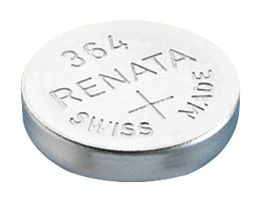


Mercury batteries also supply a stable voltage, but are now banned in many countries due to their toxicity and environmental impact. This varies for individual types one manufacturer ( Energizer) offers three silver oxide cells of the same size, 357–303, 357-303H and EPX76, with capacities ranging from 150 to 200 mAh, voltage characteristics ranging from gradually reducing to fairly constant, and some stated to be for continuous low drain with high pulse on demand, others for photo use. Silver cells may have an output voltage that is stable until it suddenly drops at end of life.

Sometimes different cells of the same type, size and capacity are optimized for different loads by using different electrolytes, so that one may have longer service life than the other when supplying a relatively high current.Īlkaline batteries are made in the same button sizes as the other types, but typically provide less capacity and less stable voltage than more costly silver oxide or lithium cells. Using the wrong cell may lead to short life or improper operation (for example, light metering on a camera requires a stable voltage, thus silver cells are usually specified). However, the composition can affect service life and voltage stability. Properties of cell chemistries Ĭells of different chemical composition made in the same size are mechanically interchangeable. Duracell has attempted to mitigate this by adding a bitter coating to their batteries. Mercuric oxide button cells were formerly common, but are no longer available due to the toxicity and environmental effects of mercury.īutton cells are dangerous for small children, as when swallowed they can cause severe internal burns and significant injury or death. Common cathode materials are manganese dioxide, silver oxide, carbon monofluoride, cupric oxide or oxygen from the air. Common anode materials are zinc or lithium. Relatively high-power devices such as hearing aids may use a zinc–air battery, which has a much higher capacity for a given size, but dries out after a few weeks even if not used.īutton cells are single cells, usually disposable primary cells. Most button cells have low self-discharge, holding their charge for a long time if not used. Devices using button cells are usually designed around a cell giving a long service life, typically well over a year in continuous use in a wristwatch. Wider variants are usually called coin cells.
#Small watch batteries portable
Button cell use in RTC modules as power sourceīutton cells are used to power small portable electronics devices such as wrist watches and pocket calculators.


 0 kommentar(er)
0 kommentar(er)
